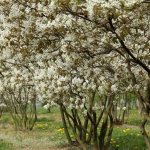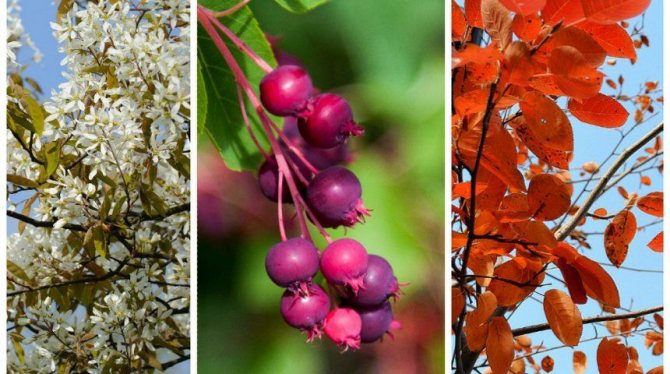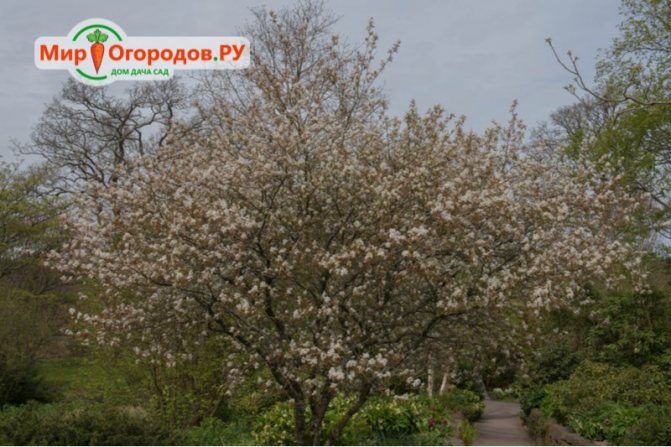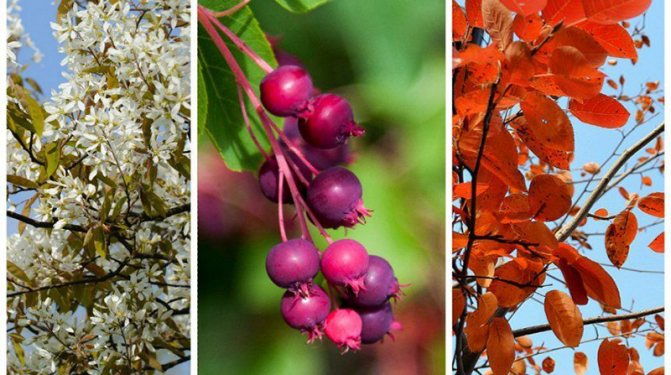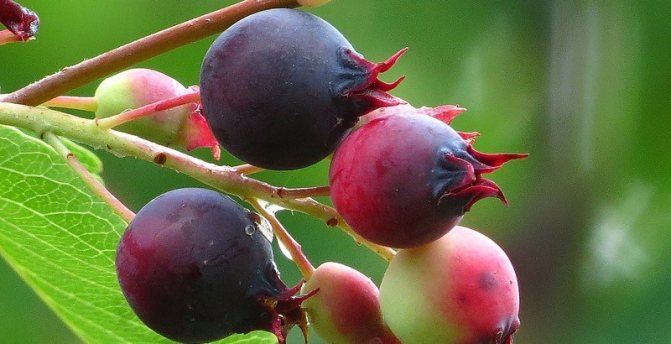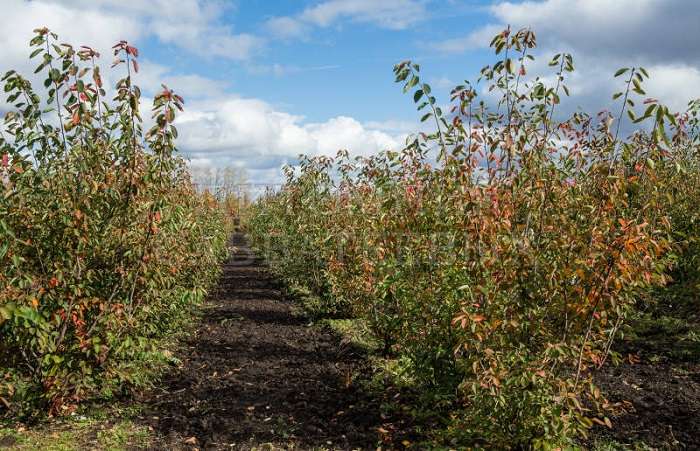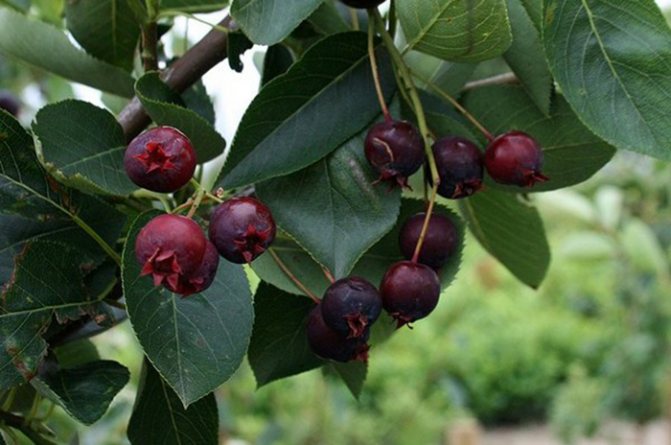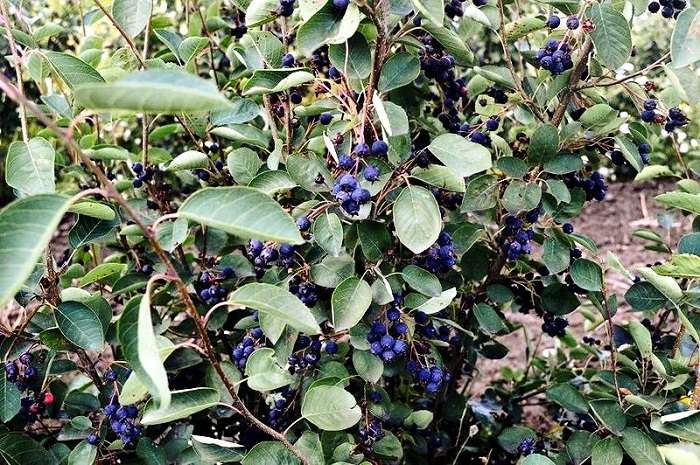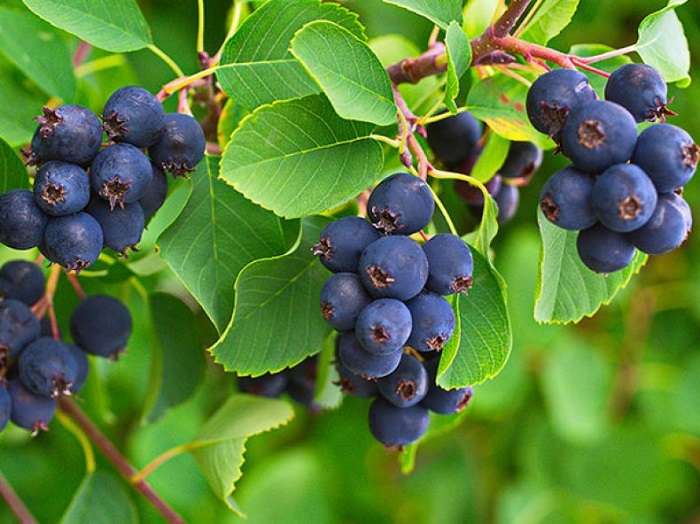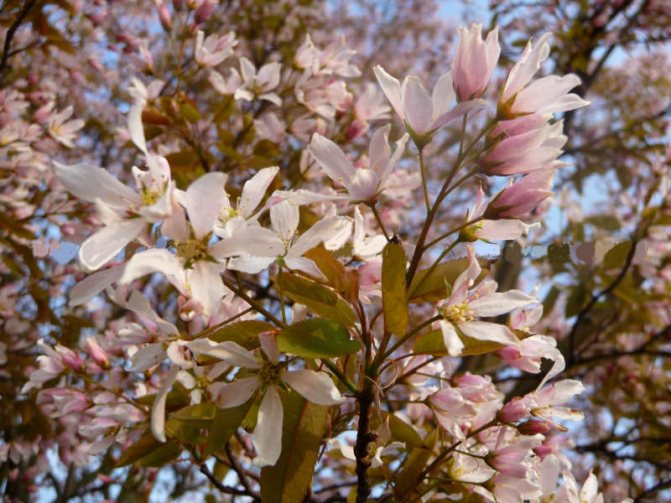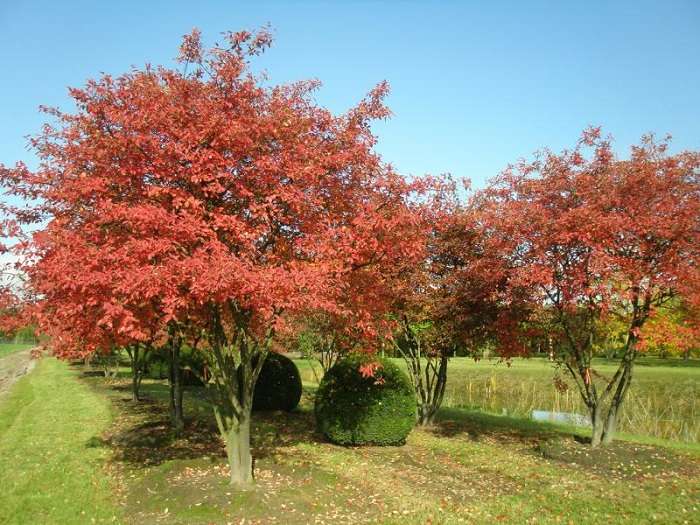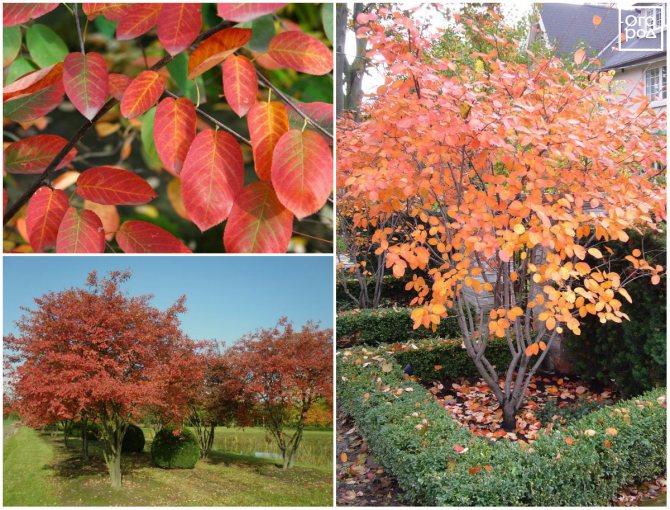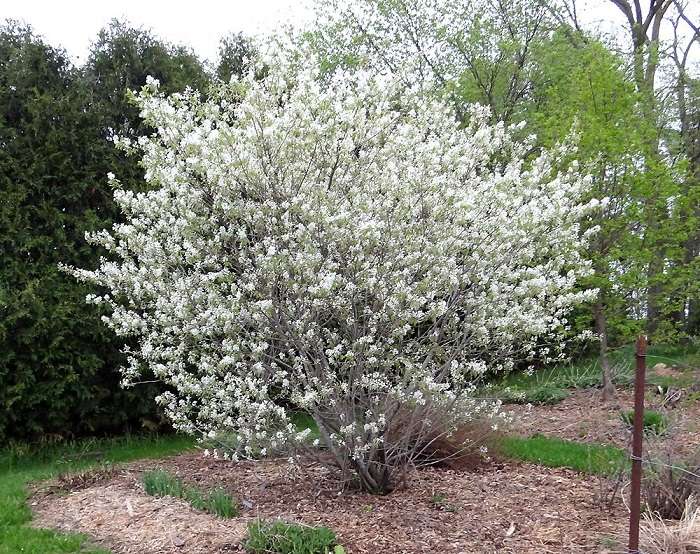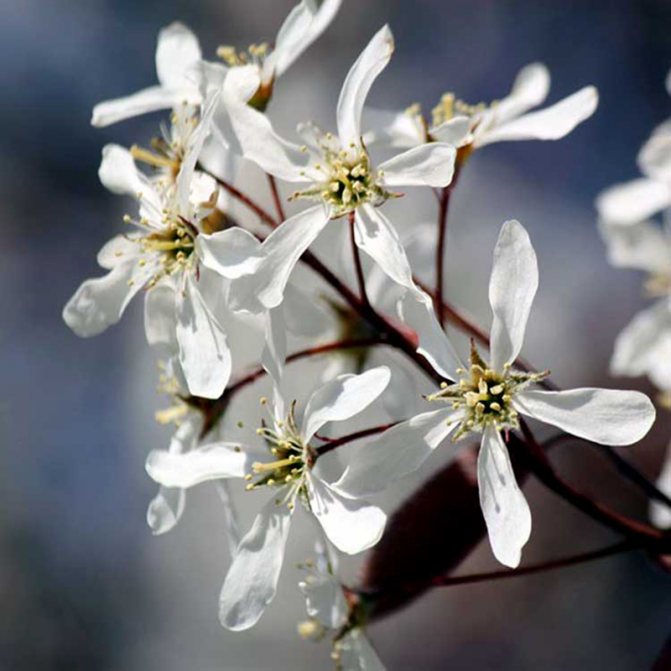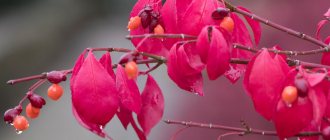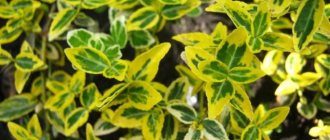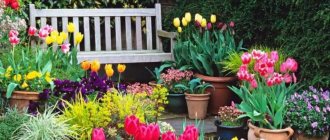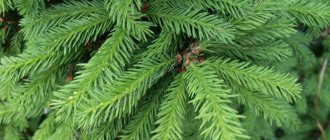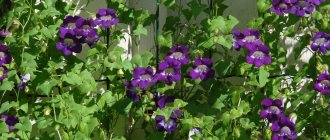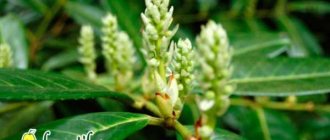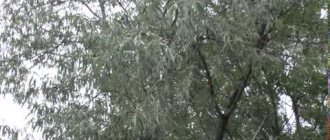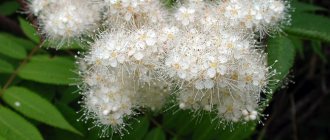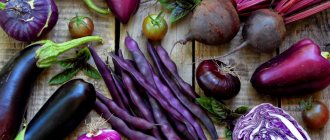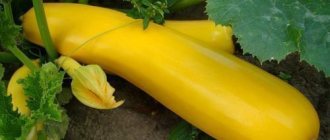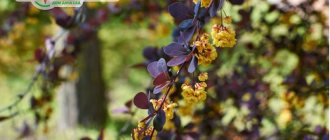Irga, widespread in the West, is extremely rare in domestic gardens. And it is a pity, because the plant is impressive in its decorative properties and has high nutritional properties. The many varieties allow it to be widely used in creating exquisite designs, and the fruits to be used in cooking.
The use of irgi in landscape design can be very diverse, since different varieties differ in growth (see photo) and cultivation conditions. Not all subspecies hibernate in open soil, are drought tolerant, and immune to gardener mistakes.
Description of irgi
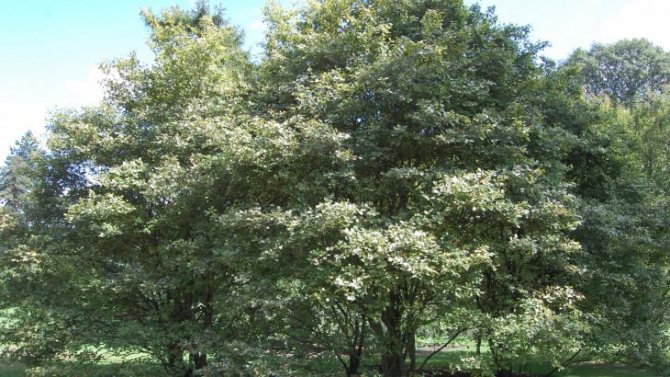
Irga is a tall shrub with several trunks. The bush itself looks beautiful, especially during flowering. White fragrant flowers are collected in a brush and are not afraid of frost, insects pollinate them. If the weather is good, up to 80% of the flowers are pollinated.
Irga is a completely unpretentious and frost-resistant plant, grows on soils with different mechanical composition, tolerates drought and can grow in waterlogged places. It bears fruit annually, lives up to 60 years. And the best part is that it is not affected by pests, which means that it does not need to be treated with chemistry.
Bush care
Irga is unpretentious in leaving. An adult tree has a good root system that goes deep into the ground. Thanks to this, it is resistant to low temperatures and short droughts. However, a young plant less than five years old should be watered abundantly. Hose watering with a spray in the evening is most beneficial for the shrub. The land near the trunks of Irga needs to be loosened from time to time. This process is perfectly combined with cleaning the soil from weeds. You need to dig up the soil every fall, while fertilizing it.
It is not necessary to feed the plant in the first 5 years of life. But upon reaching adulthood, this procedure is required. Fertilizers containing superhosphate and potassium are applied to the near-stem zone. For berry bushes, nitrophoska is added to the soil in the spring; during the ovary period, infusions from water, cow dung are added. Irgu Lamarck is pruned to form a beautiful foliage cap, rejuvenation, and sanitary cleaning. Cleans trees in the spring and autumn seasons. Damaged and dead branches are removed. At first, all the growth is removed, leaving the two strongest stepsons. With age, old trees are removed, replacing with younger ones.
ON A NOTE! To form a lush crown, it is recommended to cut off the vertical shoots by one third, and cut off all the lateral ones. There are no special measures to cover the plant for wintering, since the plant is frost-resistant.
Useful properties of irgi
The black-blue irgi berries do not ripen immediately, but gradually, starting from the second half of July to mid-August. I believe that this is a virtue, since you can feast on delicious fresh fruits for a long time directly from the bush.
The berries have a juicy flesh with a sweet-sweet taste. They contain vitamins C and P, anthocyanins, sugars, tannins and dyes, carotene, sitosterol and other useful substances.
One bush, depending on the size, gives 5-15 kg of berries, which are harvested as they ripen. They make compotes, wine, juice, jelly, marshmallow, jam and jelly. But most importantly, in my opinion, they have been eaten fresh for quite some time.
Irgi berries are very fond of children and birds. In our region, we have to protect the harvest by covering the bushes with a net, this berry is so attractive to birds (as, incidentally, cherries and cherries).
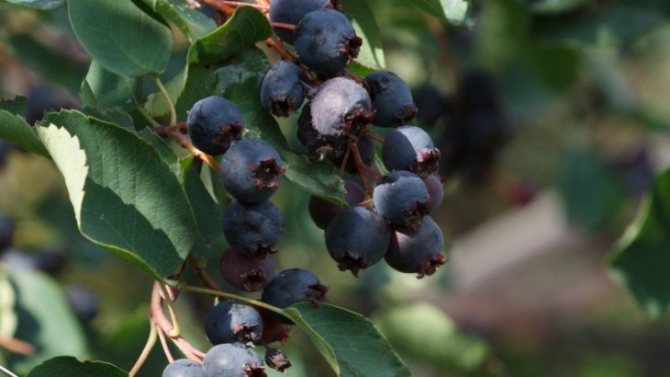

The infusion of flowers has a beneficial effect on the heart and normalizes blood pressure. Fresh and candied sirgi berries help reduce blood pressure.
Varieties related to this species.
Irgi Lamarck has several varieties. Below are the most common ones.
Ballerina variety
Van de Lar, a scientist breeder, bred this variety in 1980. Ballerina trees of large size, the height of which is 6 meters. Throughout the year, the oval leaves are yellow, green and rich in almost burgundy colors. The flowers are large, white in color. The berries grow in large clusters and are black-purple in color. Resistant to severe frost.
Robin Hill variety
It was first bred in Pennsylvania, USA. The shrub is a miniature tree 6-9 meters high, and the crown size is 5 meters. Oval leaves change their color from green to yellow, red, orange. Flowers of a pink shade of large sizes. Ripe black berries with a slight bloom.


Note: The blossoming buds are pink, but at high temperatures they change color to white.
Variety Princess Diana
Elm Grove in 1987 brought out a bush with a branchy lush crown up to 6 meters. The tree has large leaves with an unusual color. In spring, the reverse side of the leaf is red, in summer it is yellow, and the upper side is the color of olives. In the autumn period, it is red-orange. The flowers are large, the berries are medium in size. This variety is very fruitful. Withstands frost at -30 degrees. Many gardeners mistakenly believe that Prince of Ulyam is a species of Irga Lamarck. In fact, this variety belongs to the species Canadian Irga.
Where else is irga used?
Irga has long been known to gardeners not only as a useful plant, but also as an ornamental plant. It is planted in group plantings to create a beautiful landscape, used as hedges and used as a stock for dwarf apple and pear trees.
If you plant several irgi bushes on the north side of the site, then such a planting will protect it from cold winds.
Irgi bushes help fight soil erosion, they are used for afforestation of ravines. In addition, experts use beautiful irgi wood for the manufacture of handles for knives, forks, spoons, caskets and other small wooden items.
How Irga reproduces
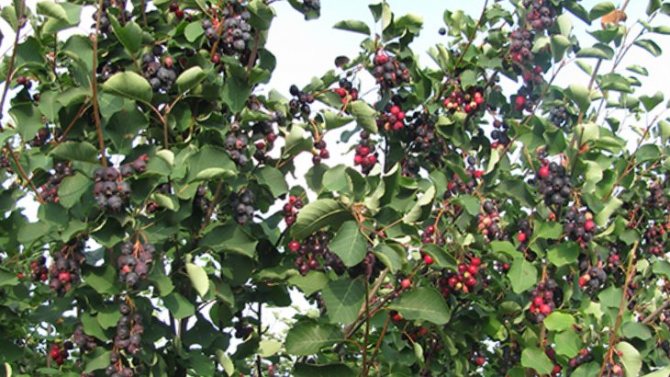

The main breeding method for irgi is seed. Seeds are planted in spring and autumn. When sowing in autumn, the seeds should be stored in a cool, dark place (refrigerator or basement) without drying. After removing from the pulp, they are mixed with sand and stored as such until sowing.
You can sow, starting from the second half of September-early October, on previously prepared plots. Sowing depth - 1-2 cm.
For spring sowing, seeds are mixed with sand (moss, sawdust) in a ratio of 1: 2 and stored for 3-4 months at a temperature of 0-2 ° C. Seeds germinate on the 8-12th day after sowing.
You can also propagate irgu by shoots, layering, dividing the bush, root and green cuttings, or grafted onto mountain ash or hawthorn.
If the ground under the bushes is well-groomed, loose, then self-seeding from fallen berries appears. Young plants need to be dug up and planted on a seedbed for growing, and then planted in a permanent place.
Reproduction of irgi in other ways is carried out in the same way as in other crops.
Diseases and pests
Let's start with the diseases that can affect the plant.
- Tuberculariosis. Fungal disease, which manifests itself in the form of dying off of the tips of the shoots. Also in the spring, red tubercles of small diameter appear on the shoots. Infection occurs through cracks in the bark. Exceptionally weak shoots are affected by the fungus.To cope with the disease, you should cut off all affected branches in a timely manner, and then treat the bush with Bordeaux liquid. You can also use a solution of copper sulfate.
- Gray rot. Again, a fungal disease, the characteristic symptoms of which are light brown spots that appear on the berries. Further, the spot grows, and the berry rots very quickly. The rotten fruit turns gray and is covered with bloom. Plaque can also be present on leaves and young shoots. Irregular gray spots appear, after which the affected part begins to rot. Control measures: first, all affected shoots, leaves and fruits should be removed from the shrub, and then treated with a fungicide. If chemical treatment is not possible, resort to using Bordeaux liquid.
- Phylostictic spotting. Another fungal disease, which manifests itself in the form of dark brown spots on the leaves. Over time, the stain begins to grow, and its color darkens. To get rid of the disease, all damaged parts of the bush should be removed and burned, and then treated with a fungicide or Bordeaux liquid.
We turn to pests that parasitize precisely on this crop.
- Irrigation seed-eater. This is an insect that looks like a rider. Has a brown body color and transparent wings. Lays white larvae, which overwinter in damaged fruits. In order to prevent the appearance or destroy existing pests, the shrub should be treated with chemicals before flowering (Karbofos, Fufanon, Aktellik).
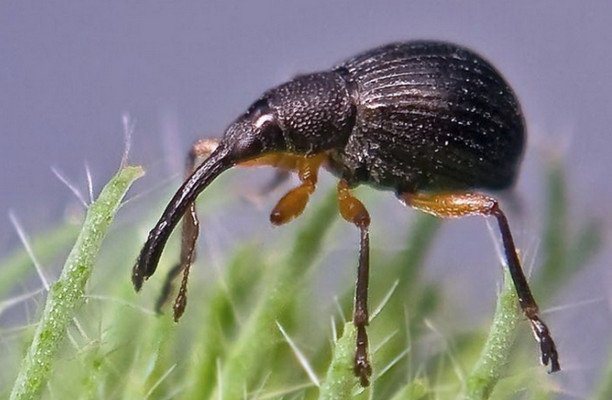

- Speckled moth. A small butterfly that lays its larvae directly on the leaf plates of a plant. At the end of summer, the larvae begin to destroy the leaves, as a result of which they become covered with dead spots and begin to crumble. Caterpillars should be destroyed only after harvest. The plant is treated with the same drugs that are used against the seed eater.
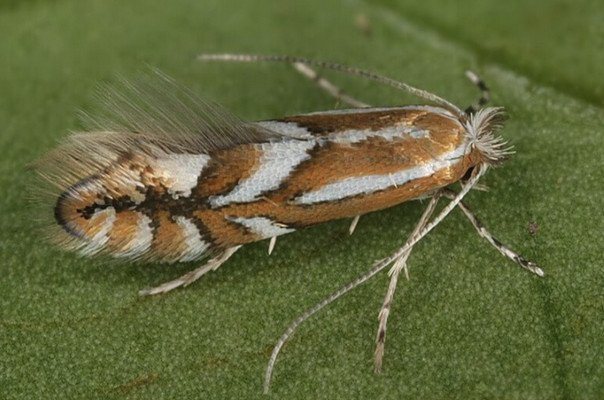

Planting irgi
When planting irgi in a permanent place between the bushes, they maintain a distance of 2-2.5 m.If the seedlings are used to create a hedge, then they are planted at a distance of 1-1.5 m.
How to prepare a planting pit for irgi seedlings
The pit for planting should be at least 60x60 cm. The planting mixture is made up of garden soil and humus, 50 g of potassium salt and 100 g of superphosphate are added to it.
Under the very roots, soil is poured without fertilizers!
If an irgi seedling is purchased in a nursery, then it must be planted 5-6 cm deeper than it grew before. After planting, the branches are shortened by 1/3. Further care of the seedling is the same as for other garden fruit and berry crops.
What else you should know
Fruiting ends in autumn. It's time to do sanitary pruning! Before the procedure, you need to fertilize, dig up the ground and remove the fallen leaves. Irga does not need shelter, as it tolerates winter normally. The trunks of the plant do not crack even in forty-degree frost.
Pruning is carried out as needed and only if the crop has not been planted in the sun. Shrubs that are under 2 years old should be trimmed.
Correction is also performed in the spring before the start of sap flow. Initially, zero shoots are left, coming from the root growth. When the plant has formed enough trunks, it will be necessary to remove two weakened shoots, located vertically. They will need to be shortened by 20%.
The next year, the branches that are on the sides are cut off. Thanks to the adjustment, the crown grows better. Sections need to be treated with garden varnish or oily paint. Pruning improves the decorative qualities of the plant. Irga feels better if dry and weakened branches are removed.

